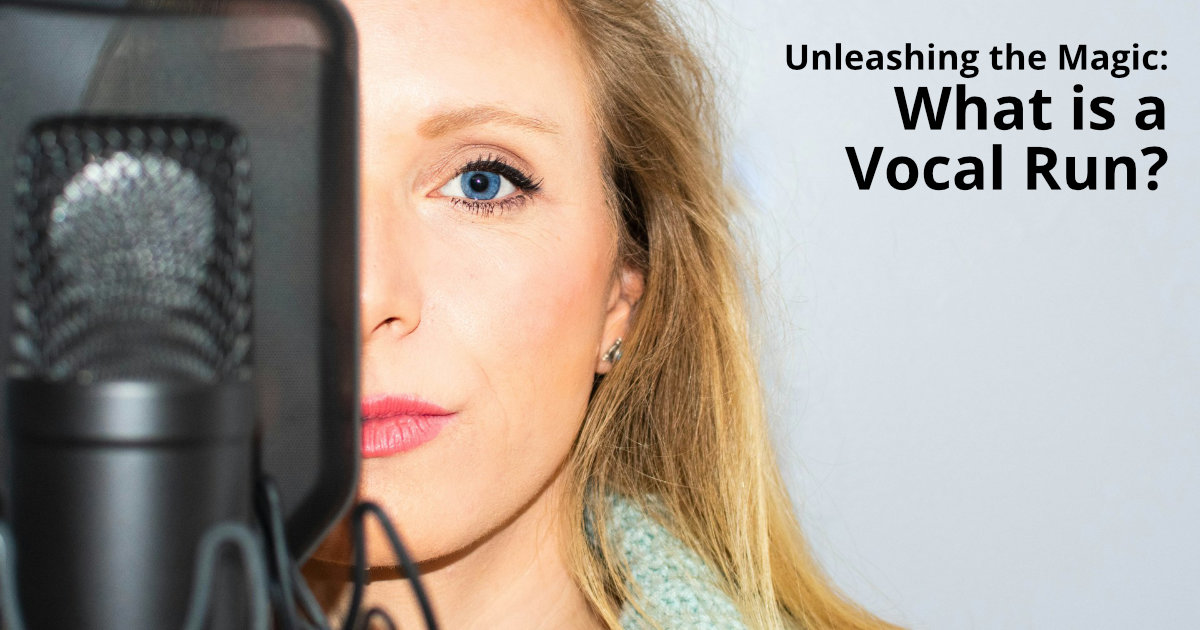Estimated reading time: 12 minutes
Vocal runs are a captivating and impressive vocal technique that adds a touch of magic to any performance. But what exactly is a vocal run? In simple terms, it is a series of quick and melodic notes sung in succession within a phrase or line of a song. Vocal runs have the power to captivate and mesmerize listeners, showcasing the singer’s agility, range, and control. Whether you’re a seasoned vocalist or just beginning your singing journey, understanding the art of vocal runs can take your vocal prowess to new heights.
Table of contents
- Understanding Vocal Cords and How They Produce Runs
- The Anatomy of a Vocal Run
- The Role of Scales in Vocal Runs
- Techniques for Executing Vocal Runs
- Famous Vocal Runs in Popular Music
- How to Practice and Improve Your Vocal Runs
- Exploring Different Types of Vocal Runs
- The Difference Between Vocal Runs and Riffs
- Incorporating Vocal Runs into Your Favorite Songs
- Vocal Runs in Different Genres of Music
- The Impact of Vocal Runs on a Song
- The Evolution of Vocal Runs in Contemporary Music
- Elevate Your Vocal Performance with Acapella Samples
- Dive Deeper into Vocal Techniques and Tools
- Conclusion: Embracing the Magic of Vocal Runs
- FAQ
Understanding Vocal Cords and How They Produce Runs
To comprehend vocal runs, it’s essential to grasp the mechanics behind them. The vocal cords, located in the larynx, play a crucial role in producing these impressive melodic feats. When you sing, your vocal cords vibrate, producing sound. Vocal runs occur when these vibrations rapidly transition between different pitches, creating a cascade of notes that flow seamlessly together. It’s like a rollercoaster ride for your voice, smoothly gliding through various pitches in a quick succession of breathtaking melodies.
The Anatomy of a Vocal Run
A vocal run typically consists of a series of consecutive notes within a specific range. The singer starts from a base note and swiftly moves up or down the musical scale, hitting different pitches in rapid succession. This skillful display of vocal dexterity requires precise control and a keen sense of pitch. The secret to a flawless vocal run lies in maintaining a smooth and seamless transition between each note while preserving clarity and precision. It’s like a musical acrobatics routine, where the singer effortlessly leaps from one note to another, leaving the audience in awe.
| Aspect | Description |
|---|---|
| Starting Pitch | The initial note from which the vocal run begins. |
| Direction | Whether the vocal run ascends (moves higher in pitch), descends (moves lower in pitch), or includes a combination of ascending and descending elements. |
| Range | The span of pitches covered by the vocal run, from the lowest note to the highest note included in the sequence. |
| Speed | The tempo or pace at which the vocal run is executed, ranging from slow and deliberate to fast and rapid. |
| Note Density | The number of individual notes included in the vocal run, ranging from sparse (fewer notes) to dense (many notes packed closely together). |
| Smoothness | The degree to which the transition between each note in the vocal run is seamless and fluid, without any noticeable breaks or abrupt changes in tone. |
| Dynamic Variation | The use of varying levels of volume and intensity throughout the vocal run, adding expression and emotion to the performance. |
| Ornamentation | Additional embellishments, such as vibrato, melisma, or pitch bends, used to decorate individual notes within the vocal run, enhancing its musicality and style. |
| Articulation | The clarity and precision with which each note in the vocal run is enunciated, ensuring that consonants and vowels are pronounced distinctly for maximum intelligibility. |
| Resolution | The final note or resolution point of the vocal run, where the melodic sequence concludes, often aligning with the underlying chord progression or musical phrase. |
The Role of Scales in Vocal Runs
Scales play a significant role in the execution of vocal runs. By practicing scales, singers develop the ability to navigate through different pitches effortlessly. The major scale, for example, is a fundamental tool for understanding musical intervals and pitch relationships. Singers often use the major scale as a foundation for practicing vocal runs, as it provides a clear roadmap of the notes to follow. Additionally, exploring scales such as the pentatonic scale or the minor scale can add depth and complexity to your vocal runs, allowing you to create unique and captivating melodic sequences.

Techniques for Executing Vocal Runs
Executing vocal runs requires a combination of technique, control, and practice. Here are a few techniques that can help you master this mesmerizing vocal skill:
- Breath Control: Proper breath control is essential for executing vocal runs with precision. Practice diaphragmatic breathing to ensure a steady and controlled airflow.
- Articulation: Clear and precise articulation of each note is crucial for a flawless vocal run. Pay attention to vowel sounds and consonants to maintain clarity and avoid muddiness.
- Agility Exercises: Engage in vocal exercises that focus on agility, such as scales, arpeggios, and trills. These exercises will enhance your vocal flexibility and help you navigate through different pitches effortlessly.
- Mimicking: Listen to recordings of skilled vocalists and attempt to mimic their vocal runs. This will help you develop a better understanding of the techniques involved and expand your vocal range.
By incorporating these techniques into your practice routine, you will steadily improve your ability to execute vocal runs with confidence and finesse.
Famous Vocal Runs in Popular Music
Vocal runs have been used by countless iconic singers throughout the history of popular music. From soulful gospel singers like Aretha Franklin to contemporary pop sensations like Ariana Grande, vocal runs have become a defining feature of their performances. Let’s take a closer look at some famous vocal runs that have left audiences spellbound:
- Aretha Franklin – “Respect”: Aretha Franklin’s powerful and soulful vocal run towards the end of “Respect” has become legendary. Her ability to effortlessly transition between notes in quick succession is a testament to her extraordinary vocal talent.
- Mariah Carey – “Emotions”: Mariah Carey’s incredible vocal range is showcased in the breathtaking vocal run she performs in “Emotions.” Her agility and control are on full display as she effortlessly hits each note with precision and clarity.
- Whitney Houston – “I Will Always Love You”: In her iconic rendition of “I Will Always Love You,” Whitney Houston delivers a stunning vocal run that resonates with raw emotion. Her ability to infuse her runs with soul and passion is a testament to her status as one of the greatest vocalists of all time.
By studying the vocal runs of these legendary singers, you can gain inspiration and insights into the nuances of this captivating vocal technique.
How to Practice and Improve Your Vocal Runs
Mastering vocal runs requires dedicated practice and patience. Here are some tips from vocal coaches to help you improve your vocal runs:
- Start Slow: Begin by practicing vocal runs at a slower pace. This will allow you to focus on precision and clarity. As you become more comfortable, gradually increase the speed.
- Break It Down: If a vocal run feels challenging, break it down into smaller segments. Practice each segment separately, focusing on accuracy and fluidity. Once you’ve mastered the individual sections, gradually piece them together.
- Record Yourself: Recording your practice sessions allows you to objectively assess your progress. Listen for areas that need improvement and work on refining those sections.
- Seek Feedback: Don’t be afraid to seek feedback from vocal coaches or experienced singers. They can provide valuable insights and offer guidance on areas that need improvement.
Remember, consistent practice and a positive mindset are key to mastering vocal runs. Embrace the journey of improvement and celebrate your progress along the way.
Exploring Different Types of Vocal Runs
Vocal runs come in various forms, each adding a unique flavor to a song. Here are a few types of vocal runs you can experiment with:
- Ascending Runs: Ascending runs start from a lower pitch and progressively move higher. They create a sense of anticipation and energy, adding excitement to a performance.
- Descending Runs: Descending runs begin at a higher pitch and gradually move lower. They can add a sense of melancholy or introspection to a song.
- Chromatic Runs: Chromatic runs involve consecutive notes that move up or down the musical scale in half-step increments. They create a sense of tension and can add a touch of drama to a performance.
- Melismatic Runs: Melismatic runs involve elongated notes, where a single syllable is sung over multiple pitches. They allow for expressive ornamentation and can convey deep emotions.
By exploring these different types of vocal runs, you can expand your repertoire and add versatility to your performances.
The Difference Between Vocal Runs and Riffs
Vocal runs and riffs are often used interchangeably, but they have distinct characteristics. While vocal runs involve a series of quick and melodic notes sung in succession, riffs are short, repeated musical phrases that add embellishment to a song. Riffs often involve repeating a sequence of notes or patterns, while vocal runs focus on smoothly transitioning between different pitches. Both techniques showcase a singer’s skill and creativity, but understanding the differences between them allows for a more nuanced approach to vocal performance.
| Aspect | Vocal Runs | Riffs |
|---|---|---|
| Definition | A series of quick and melodic notes sung in succession, typically within a phrase or line of a song. | Short, repeated musical phrases or patterns that add embellishment or ornamentation to a song. |
| Length | Can vary in length from short, simple runs to longer, more elaborate sequences spanning multiple octaves. | Generally shorter in length, often consisting of a few notes or a brief musical phrase repeated throughout. |
| Structure | Characterized by smooth and seamless transitions between each note, creating a flowing and continuous melody. | May involve repetitive patterns or motifs, adding rhythmic and melodic interest to a song. |
| Function | Enhances the vocal performance by showcasing the singer’s agility, range, and control. | Adds texture, flavor, and musical interest to a song, serving as a form of musical expression or improvisation. |
| Emphasis on Technique | Focuses on precise control of pitch, articulation, and breath support to execute rapid melodic sequences. | Requires skillful manipulation of timing, phrasing, and dynamics to create rhythmic and melodic variation. |
| Examples | Aretha Franklin’s vocal run in “Respect” | The repeated riff in James Brown’s “I Got You (I Feel Good)” |
Incorporating Vocal Runs into Your Favorite Songs
Once you’ve developed a solid foundation in vocal runs, you can start incorporating them into your favorite songs. Experiment with different sections of the song where vocal runs can enhance the emotional impact or add a touch of flair. Start by identifying moments where a vocal run would complement the melody or lyrics. Practice these sections diligently, focusing on maintaining the integrity of the original melody while infusing it with your unique vocal runs. By doing so, you’ll breathe new life into your favorite songs and make them truly your own.
Vocal Runs in Different Genres of Music
Vocal runs are not confined to a specific genre of music. They can be found in various genres, adding a distinctive element to each. From soul and R&B to pop and even rock, vocal runs have become a versatile tool for singers across different musical styles. Gospel music, in particular, is known for its intricate and awe-inspiring vocal runs. However, contemporary artists like Ariana Grande have also popularized the use of vocal runs in mainstream pop music. Regardless of the genre you specialize in, incorporating vocal runs can elevate your singing and captivate audiences across the musical spectrum.
The Impact of Vocal Runs on a Song
Vocal runs have a profound impact on a song, enhancing its emotional depth and leaving a lasting impression on listeners. When executed skillfully, vocal runs can evoke a range of emotions, from joy and excitement to heartache and longing. They add a layer of complexity and sophistication to a song, elevating it from a simple melody to a captivating performance. Vocal runs can also serve as a form of self-expression for singers, allowing them to infuse their unique style and personality into their music. Whether it’s a soulful ballad or an upbeat pop track, vocal runs have the power to transform a song into an unforgettable musical experience.

The Evolution of Vocal Runs in Contemporary Music
Over the years, vocal runs have evolved and adapted to the changing landscape of contemporary music. While they have been a staple of gospel and soul for decades, vocal runs have found their way into various genres, including pop, R&B, and even hip-hop. Singers like Ariana Grande and Beyoncé have pushed the boundaries of vocal runs, incorporating complex melodic sequences and intricate vocal acrobatics into their music. This evolution has brought a fresh and dynamic energy to vocal runs, making them more accessible and relatable to a wider audience. As music continues to evolve, so too will the art of vocal runs, ensuring their place as a timeless and captivating vocal technique.
Elevate Your Vocal Performance with Acapella Samples
Ready to take your vocal skills to the next level? Look no further! Our acapella samples offer a fantastic opportunity to enhance your singing abilities and add a professional touch to your performances.
With our diverse range of acapella samples, you can experiment with different vocal runs, riffs, and techniques, all from the comfort of your own home. Whether you’re a seasoned pro or just starting out, our samples provide a fun and interactive way to practice and refine your vocal prowess.
Say goodbye to bland practice sessions and hello to exciting new possibilities. Elevate your vocal performance today with our acapella samples and let your voice shine like never before!
Dive Deeper into Vocal Techniques and Tools
Looking to expand your knowledge beyond vocal runs and riffs? Check out our other articles for more insights into the world of vocal performance!
- Best DAW to Record Vocals: Discover the top digital audio workstations for recording your vocals with ease and professionalism.
- What is a Vocal Chain?: Uncover the secrets behind creating a killer vocal chain and learn how to achieve that studio-quality sound.
- Best Vocal Trance: Explore the mesmerizing world of vocal trance music and find your new favorite tracks to sing along to.
- The Beginner’s Guide on How to EQ Vocals for Stellar Sound.
- What Is Gain in Audio? Understanding Gain in Simple Terms.
- What is a Stem in Music? Demystifying Music Production.
- What is a Vocalist? Everything You Need to Know.
- How to Compress Vocals? A Step-by-Step Guide to Perfectly Compressed Vocals.
Dive into these articles and take your vocal journey to exciting new heights!
Conclusion: Embracing the Magic of Vocal Runs
In conclusion, vocal runs are a mesmerizing vocal technique that adds a touch of magic to any performance. Understanding the mechanics and techniques behind vocal runs can help you master this captivating skill. By practicing scales, refining your technique, and seeking inspiration from legendary vocalists, you can develop the agility and control required to execute vocal runs with finesse. Vocal runs have the power to transform a song, leaving a lasting impact on listeners and showcasing your vocal prowess. So, embrace the magic of vocal runs, and let your voice soar to new heights.
FAQ
Vocal runs involve a series of quick and melodic notes sung in succession, while riffs are short, repeated musical phrases that add embellishment to a song.
Practice regularly, focus on breath control and articulation, break down runs into smaller sections, and seek feedback from vocal coaches.
Aretha Franklin, Mariah Carey, and Whitney Houston are renowned for their impressive vocal runs.
Yes, vocal runs can be found in various genres, including soul, pop, R&B, and even rock.
Vocal runs add depth, emotion, and complexity to a song, elevating it from a simple melody to a captivating performance.
